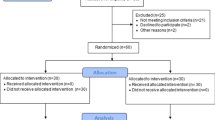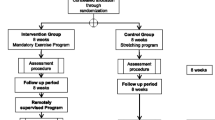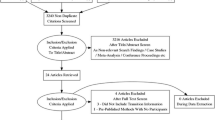Abstract
Impact reduction has become a factor of interest in the prevention of running-related injuries such as stress fractures. Currently, the midfoot strike pattern (MFS) is thought as a potential way to decrease impact. The purpose was to test the effects of two long-term interventions aiming to reduce impact during running via a transition to an MFS: a foot strike retraining versus a low-drop/low-heel height footwear. Thirty rearfoot strikers were randomly assigned to two experimental groups (SHOES and TRAIN). SHOES progressively wore low-drop/low-heel height shoes and TRAIN progressively adopted an MFS, over a 3-month period with three 30-min running sessions per week. Measurement sessions (pre-training, 1, 2 and 3 months) were performed during which subjects were equipped with three accelerometers on the shin, heel and metatarsals, and ran for 15 min on an instrumented treadmill. Synchronized acceleration and vertical ground reaction force signals were recorded. Peak heel acceleration was significantly lower as compared to pre-training for SHOES (−33.5 ± 12.8 % at 2 months and −25.3 ± 18.8 % at 3 months, p < 0.001), and so was shock propagation velocity (−12.1 ± 9.3 %, p < 0.001 at 2 months and −11.3 ± 4.6 %, p < 0.05 at 3 months). No change was observed for TRAIN. Important inter-individual variations were noted in both groups and reported pains were mainly located at the shin and calf. Although it induced reversible pains, low-drop/low-heel height footwear seemed to be more effective than foot strike retraining to attenuate heel impact in the long term.



Similar content being viewed by others
Abbreviations
- BW:
-
Body weight
- F max :
-
Maximal vertical ground reaction force
- F q :
-
Step frequency
- F z1 :
-
Magnitude of impact force peak
- LR:
-
Vertical mean loading rate
- MFS:
-
Midfoot strike
- PHA:
-
Peak heel acceleration
- PMA:
-
Peak metatarsal acceleration
- PTA:
-
Peak tibial acceleration
- PRS:
-
Preferred running speed
- RFS:
-
Rearfoot strike
- SPV:
-
Shock propagation velocity between heel and tibia
- t c :
-
Contact time
- t a :
-
Aerial time
- \(t_{{f}_{z1}}\) :
-
Time to impact peak
- T hm :
-
Time between heel and metatarsals peak accelerations
- VGRF:
-
Vertical ground reaction force
References
Altman AR, Davis IS (2011) Comparing barefoot running to an altered strike patterns. Med Sci Sports Exerc 43(5):S717
Anderson T (1996) Biomechanics and running economy. Sports Med 22(2):76–89
Ardigo LP, Lafortuna C, Minetti AE, Mognoni P, Saibene F (1995) Metabolic and mechanical aspects of foot landing type, forefoot and rearfoot strike, in human running. Acta Physiol Scand 155(1):17–22
Belli A, Bui P, Berger A, Geyssant A, Lacour JR (2001) A treadmill ergometer for three-dimensional ground reaction forces measurement during walking. J Biomech 34(1):105–112
Bennell K, Crossley K, Jayarajan J, Walton E, Warden S, Kiss ZS, Wrigley T (2004) Ground reaction forces and bone parameters in female with tibial stress fracture. Med Sci Sports Exerc 36(3):397–404
Bouche RT, Johnson CH (2007) Medial tibial stress syndrome (tibial fasciitis): a proposed pathomechanical model involving fascial traction. J Am Podiatr Med Assoc 97(1):31–36
Brukner P, Bradshaw C, Khan KM, White S, Crossley K (1996) Stress fractures: a review of 180 cases. Clin J Sport Med 6(2):85–89
Cibulka MT, Sinacore DR, Mueller MJ (1994) Shin splints and forefoot contact running: a case report. J Orthop Sports Phys Ther 20(2):98–102
Crossley K, Bennell KL, Wrigley T, Oakes BW (1999) Ground reaction forces, bone characteristics, and tibial stress fracture in male runners. Med Sci Sports Exerc 31(8):1088–1093
Crowell HP, Davis IS (2011) Gait retraining to reduce lower extremity loading in runners. Clin Biomech (Bristol, Avon) 26(1):78–83
Crowell HP, Milner CE, Hamill J, Davis IS (2010) Reducing impact loading in running with the use of real visual time feedbacks. J Orthop Sports Phys Ther 40(4):206–213
Daoud AI, Geissler GJ, Wang F, Saretsky J, Daoud YA, Lieberman DE (2012) Foot strike and injury rates in endurance runners: a retrospective study. Med Sci Sports Exerc 44(7):1325–1334
Davis IS (2005) Gait retraining in runners. Orthop Pract 17:8–13
Davis I, Milner C, Hamill J (2004) Does increased loading rate lead to tibial stress fractures? A prospective study. Med Sci Sports Exerc S36:S58
De Wit B, De Clercq D, Aerts P (2000) Biomechanical analysis of the stance phase during barefoot and shod running. J Biomech 33(3):269–278
Derrick TR, Mercer JA (2004) Ground/foot impacts: measurement, attenuation, and consequences. Med Sci Sports Exerc 36(5):830–831
Dickinson JA, Cook SD, Leinhardt TM (1985) The measurement of shock waves following heel strike while running. J Biomech 18(6):415–422
Divert C, Mornieux G, Baur H, Mayer F, Belli A (2005) Mechanical comparison of barefoot and shod running. Int J Sports Med 26(7):593–598
Franz JR, Wierzbinski CM, Kram R (2012) Metabolic cost of running barefoot versus shod: is lighter better? Med Sci Sports Exerc 44(8):1519–1525
Fuchs RK, Snow CM (2002) Gains in hip bone mass from high-impact training are maintained: a randomized controlled trial in children. J Pediatr 141(3):357–362
Fuchs RK, Bauer JJ, Snow CM (2001) Jumping improves hip and lumbar spine bone mass in prepubescent children: a randomized controlled trial. J Bone Miner Res 16(1):148–156
Giandolini M, Arnal PJ, Millet GY, Peyrot N, Samozino P, Dubois B, Morin JB (2013) Impact reduction during running: efficiency of simple acute interventions in recreational runners. Eur J Appl Physiol 113(3):599–609
Goss DL, Gross MT (2012a) Relationships among self-reported shoe type, footstrike pattern, and injury incidence. US Army Med Dep, 25–30
Goss DL, Gross MT (2012b) A review of mechanics and injury trends among various running styles. US Army Med Dep, 62–71
Hamill J, Russell EM, Gruber AH, Miller R (2011) Impact characteristics in shod and barefoot running. Footwear Sci 3(1):33–40
Hasegawa H, Yamauchi T, Kraemer WJ (2007) Foot strike patterns of runners at the 15-km point during an elite-level half marathon. J Strength Cond Res 21(3):888–893
Heiderscheit BC, Chumanov ES, Michalski MP, Wille CM, Ryan MB (2011) Effects of step rate manipulation on joint mechanics during running. Med Sci Sports Exerc 43(2):296–302
Hennig EM, Milani TL (1995) In-shoe pressure distribution for running in various types of footwear. J Appl Biomech 11:299–310
Horvais N, Samozino P (2013) Effect of midsole geometry on foot strike pattern and running kinematics. Footwear Sci (in press)
Hreljac A (2004) Impact and overuse injuries in runners. Med Sci Sports Exerc 36(5):845–849
Kasmer ME, Liu XC, Roberts KG, Valadao JM (2012) Foot-strike pattern and performance in a marathon. Int J Sports Physiol Perform (in press)
Ker RF, Bennett MB, Bibby SR, Kester RC, Alexander RM (1987) The spring in the arch of the human foot. Nature 325(7000):147–149
Larson P, Higgins E, Kaminski J, Decker T, Preble J, Lyons D, McIntyre K, Normile A (2011) Foot strike patterns of recreational and sub-elite runners in a long-distance road race. J Sports Sci 29(15):1665–1673
Lieberman DE (2012) What we can learn about running from barefoot running: an evolutionary medical perspective. Exerc Sport Sci Rev 40(2):63–72
Lieberman DE, Venkadesan M, Werbel WA, Daoud AI, D’Andrea S, Davis IS, Mang’eni RO, Pitsiladis Y (2010) Foot strike patterns and collision forces in habitually barefoot versus shod runners. Nature 463(7280):531–535
Lohman EB 3rd, Balan Sackiriyas KS, Swen RW (2011) A comparison of the spatiotemporal parameters, kinematics, and biomechanics between shod, unshod, and minimally supported running as compared to walking. Phys Ther Sport 12(4):151–163
Lopes AD, Hespanhol Junior LC, Yeung SS, Costa LO (2012) What are the main running-related musculoskeletal injuries? A systematic review. Sports Med 42(10):891–905
Mattila VM, Sillanpää PJ, Salo T, Laine HJ, Mäenpää H, Pihlajamäki H (2011) Can orthotic insoles prevent lower limb overuse injuries? A randomized-controlled trial of 228 subjects. Scand J Med Sci Sports 21(6):804–808
Milner CE, Ferber R, Pollard CD, Hamill J, Davis IS (2006) Biomechanical factors associated with tibial stress fracture in female runners. Med Sci Sports Exerc 38(2):323–328
Moen MH, Tol JL, Weir A, Steunebrink M, De Winter TC (2009) Medial tibial stress syndrome: a critical review. Sports Med 39(7):523–546
Morin JB, Samozino P, Peyrot N (2009) Running pattern changes depending on the level of subjects’ awareness of the measurements performed: a “sampling effect” in human locomotion experiments? Gait Posture 30(4):507–510
Nigg BM (1986) Biomechanics of running shoes. Human Kinetics Publishers, Windsor, pp 140–141
Perl DP, Daoud AI, Lieberman DE (2012) Effects of footwear and strike type on running economy. Med Sci Sports Exerc 44(7):1335–1343
Richards CE, Magin PJ, Callister R (2009) Is your prescription of distance running shoes evidence-based? Br J Sports Med 43(3):159–162
Rothschild C (2012) Running barefoot or in minimalist shoes: evidence or conjecture? Natl Strength Cond Assoc 34(2):8–17
Samozino P, Morin J-B, Mermet V, Barla C, Ouillon R, Baly L, Belli A (2008) What is the best parameter to quantify shocks during heel-toe running? 13 h annual congress of the European College of Sport Science. Estoril, Portugal
Saunders PU, Pyne DB, Telford RD, Hawley JA (2004) Factors affecting running economy in trained distance runners. Sports Med 34(7):465–485
Schwellnus MP, Jordaan G, Noakes TD (1990) Prevention of common overuse injuries by the use of shock absorbing insoles. A prospective study. Am J Sports Med 18(6):636–641
Shorten MR, Mientjes MIV (2011) The ‘heel impact’ force peak during running is neither ‘heel’ nor ‘impact’ and does not quantify shoe cushioning effects. Footwear Sci 3(1):41–58
Snyder RA, Koester MC, Dunn WR (2006) Epidemiology of stress fractures. Clin Sports Med 25(1):37–52
Squadrone R, Gallozzi C (2009) Biomechanical and physiological comparison of barefoot and two shod conditions in experienced barefoot runners. J Sports Med Phys Fitness 49(1):6–13
van Gent RN, Siem D, van Middelkoop M, van Os AG, Bierma-Zeinstra SM, Koes BW (2007) Incidence and determinants of lower extremity running injuries in long distance runners: a systematic review. Br J Sports Med 41(8):469–480
von Tscharner V, Goepfert B, Nigg BM (2003) Changes in EMG signals for the muscle tibialis anterior while running barefoot or with shoes resolved by non-linearly scaled wavelets. J Biomech 36(8):1169–1176
Zapdoor AB, Nikooyan AA (2011) The relationship between lower-extremity stress fractures and the ground reaction force: a systematic review. Clin Biomech 26:23–28
Acknowledgments
We are grateful to Drs. Pascal Edouard, Jean-Claude Chatard, Amaury Mazet, and David Hupin, from the Service de Physiologie Clinique, Médecine du Sport—Myologie, CHU Bellevue, Saint-Etienne for their help in the inclusion sessions and medical follow-up of the study. Salomon SAS supported this study through an MSc studentship grant allocated to Marlène Giandolini.
Author information
Authors and Affiliations
Corresponding author
Additional information
Communicated by Jean-René Lacour.
Appendix
Appendix
See Fig. 4.
Description of training programs through the thirty-nine training sessions for TRAIN (a) and SHOES (b). For TRAIN, black and grey bars refer to the running times (within the 30-min training session) with a MFS pattern (intervention) and with a freely chosen pattern (i.e. natural RFS pattern), respectively. For SHOES, black and grey bars refer to the running times (within the 30-min training session) with the low-drop/low-heel height shoes (intervention) and with the subjects’ usual shoes, respectively. Measurement sessions (pre-training, 1, 2 and 3 months) are also presented
Rights and permissions
About this article
Cite this article
Giandolini, M., Horvais, N., Farges, Y. et al. Impact reduction through long-term intervention in recreational runners: midfoot strike pattern versus low-drop/low-heel height footwear. Eur J Appl Physiol 113, 2077–2090 (2013). https://doi.org/10.1007/s00421-013-2634-7
Received:
Accepted:
Published:
Issue Date:
DOI: https://doi.org/10.1007/s00421-013-2634-7





